Astronomers researching the G237 protocluster find 63 galaxies within, all producing stars and more galaxies at a high rate, acting as a “shipyard” for their region of the cosmos. Plus, Juno looks inside Jupiter’s cloud bands and a review of “Invasion” on Apple TV+.
Podcast
Show Notes
Spooky Space
- These Scary Things in Space Will Haunt Your Dreams (Space.com)
- Hubble press release
Juno gets a look below Jupiter’s bands of clouds
- University of Leicester press release
- “Jupiter’s Temperate Belt/Zone Contrasts Revealed at Depth by Juno Microwave Observations,” L. N. Fletcher et al., 2021 October 28, JGR Planets
Great Red Spot goes deeper than expected
- Juno spacecraft data probes depth and structure of Jupiter’s Great Red Spot (EurekAlert)
- “Microwave observations reveal the deep extent and structure of Jupiter’s atmospheric vortices,” S. J. Bolton et al., 2021 October 28, Science
- “The depth of Jupiter’s Great Red Spot constrained by Juno gravity overflights,” Marzia Parisi, 2021 October 28, Science
Scientists create ‘superionic ice’ in the lab
- Argonne National Laboratory press release
- “Structure and properties of two superionic ice phases,” Vitali B. Prakapenka, Nicholas Holtgrewe, Sergey S. Lobanov and Alexander F. Goncharov, 2021 October 14, Nature Physics
Galaxies come together to live and die
- The University of Arizona press release
- “Spectroscopic observations of PHz G237.01+42.50: A galaxy protocluster at z = 2.16 in the Cosmos field,” M. Polletta et al., 2021 October 26, Astronomy & Astrophysics
Transcript
Hello and welcome to the Daily Space. I am your host Dr. Pamela Gay.
And I am your host Beth Johnson.
And we are here to put science in your brain.
But first, we’re going to look at some weird images that NASA and other space agencies have labeled as “spooky”. Since at least 2003, when I became a journalist, these everyday objects have been processed, cropped, and released for Halloween just to give everyone a bit of space to go with their candy.
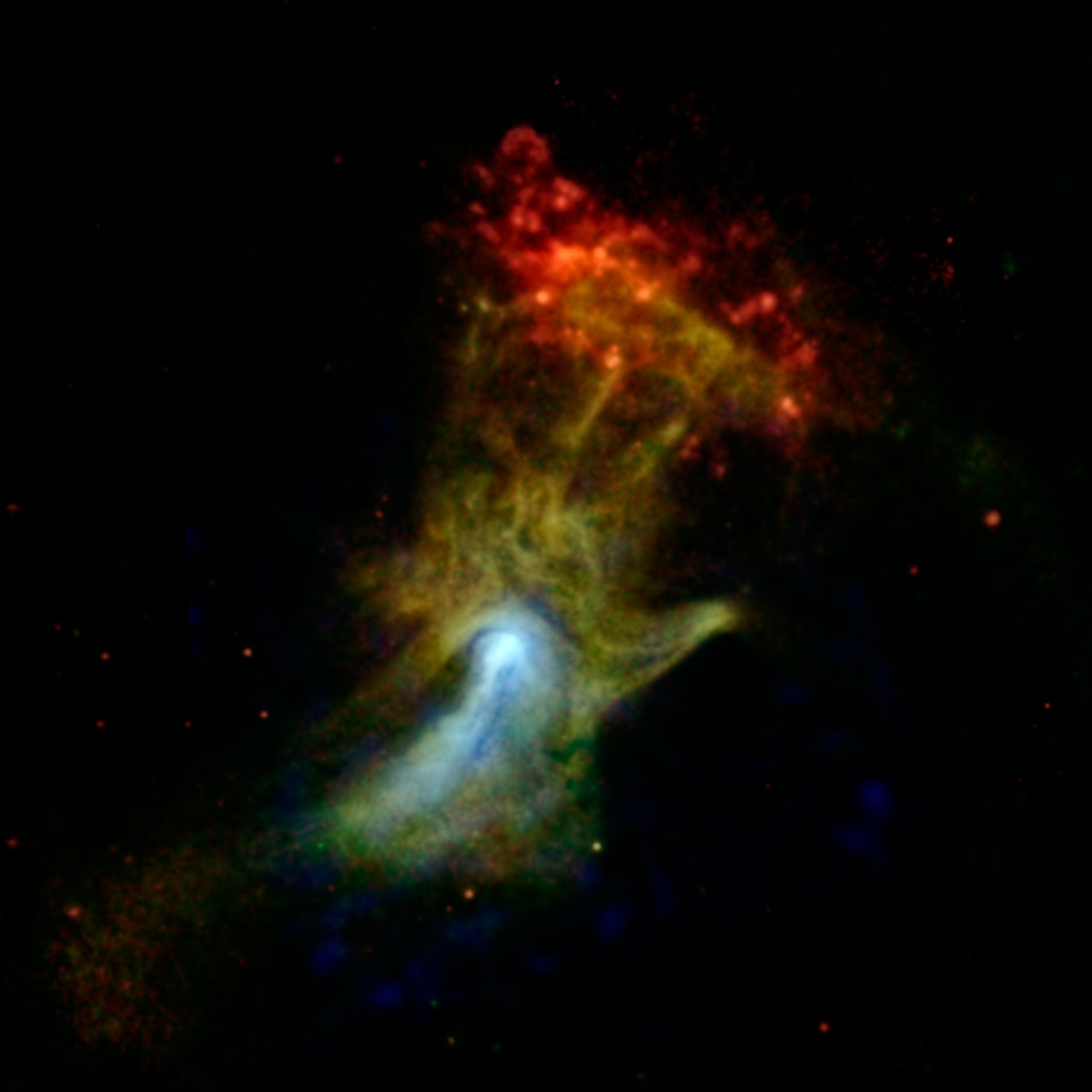
CREDIT: NASA/JPL-Caltech/McGill 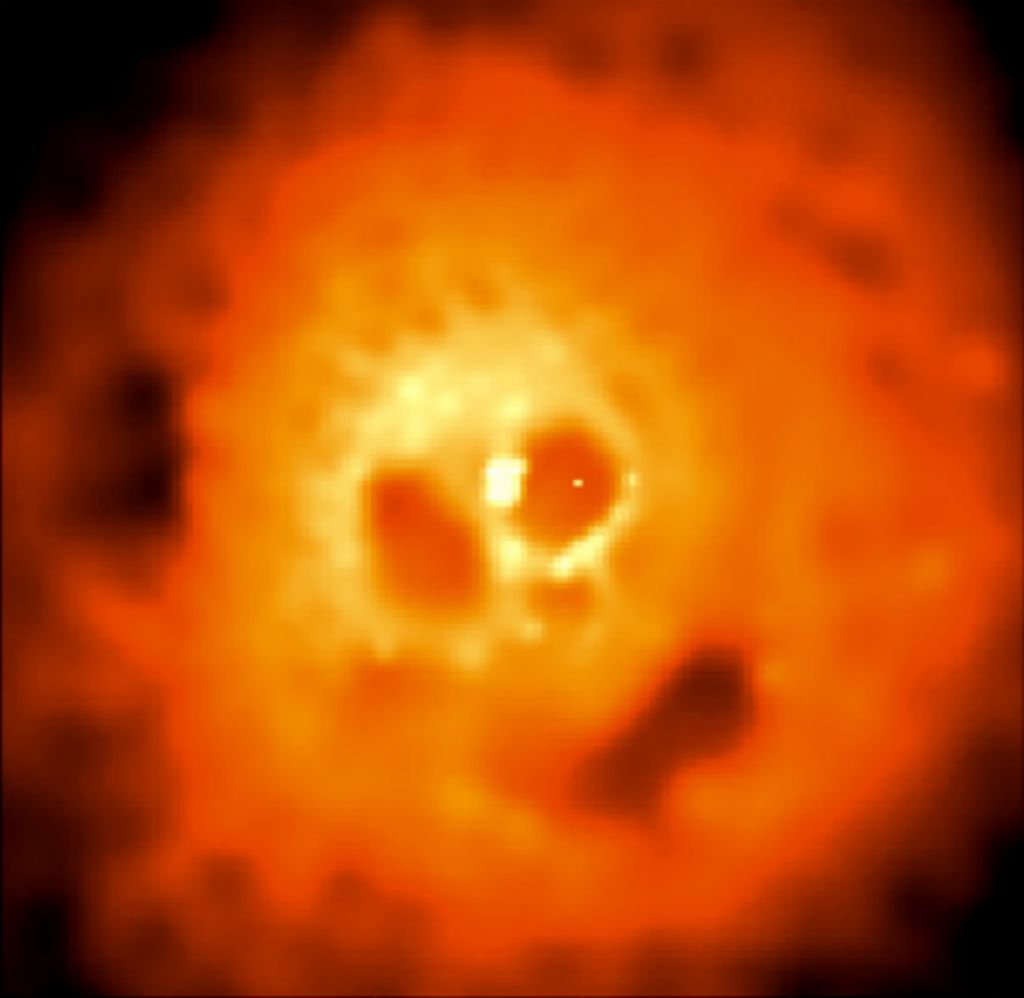
CREDIT: Credit: A. Fabian (IoA Cambridge) et al., NASA 
CREDIT: Adam Block, NOAO, AURA, NSF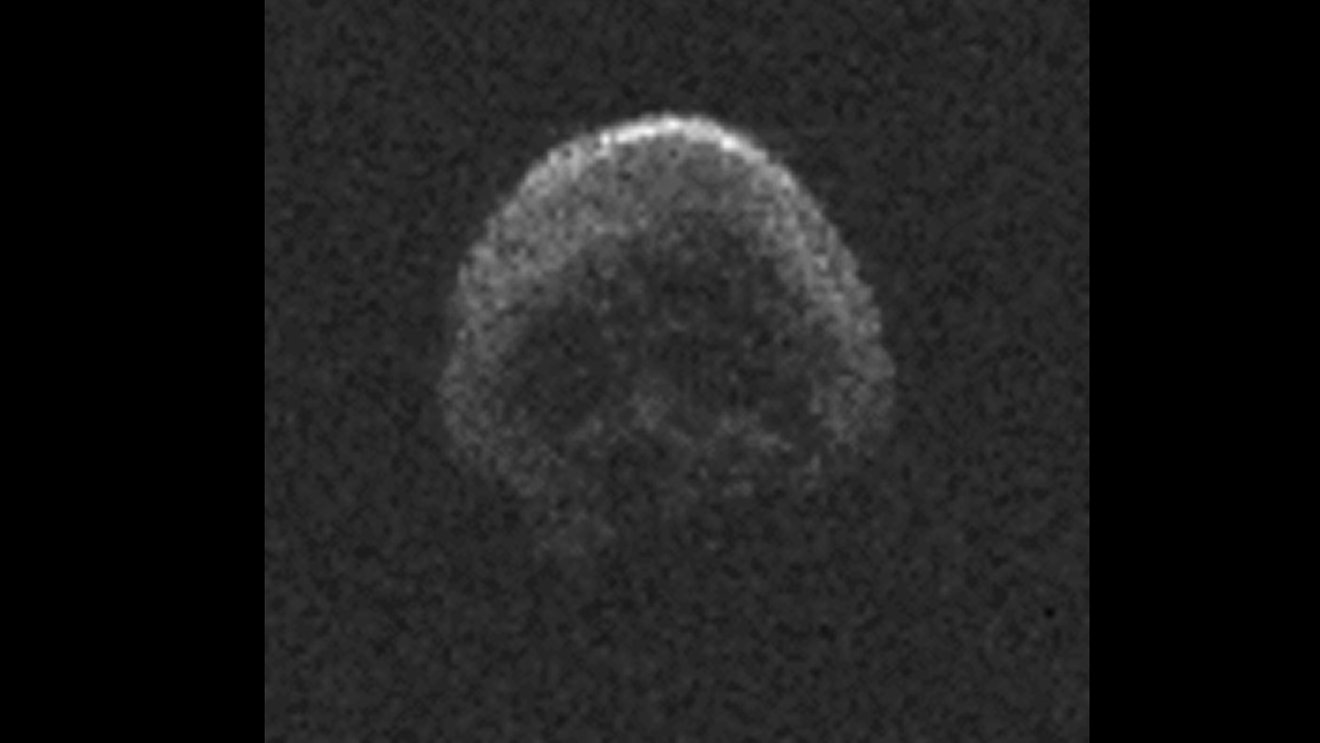
CREDIT: NAIC-Arecibo/NSF 
CREDIT: NASA/JPL-Caltech 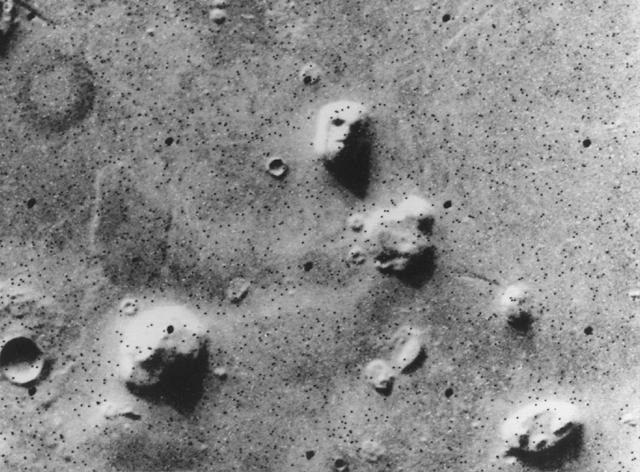
CREDIT: NASA/JPL 
CREDIT: NASA/JPL-Caltech/Univ. of Wisc. 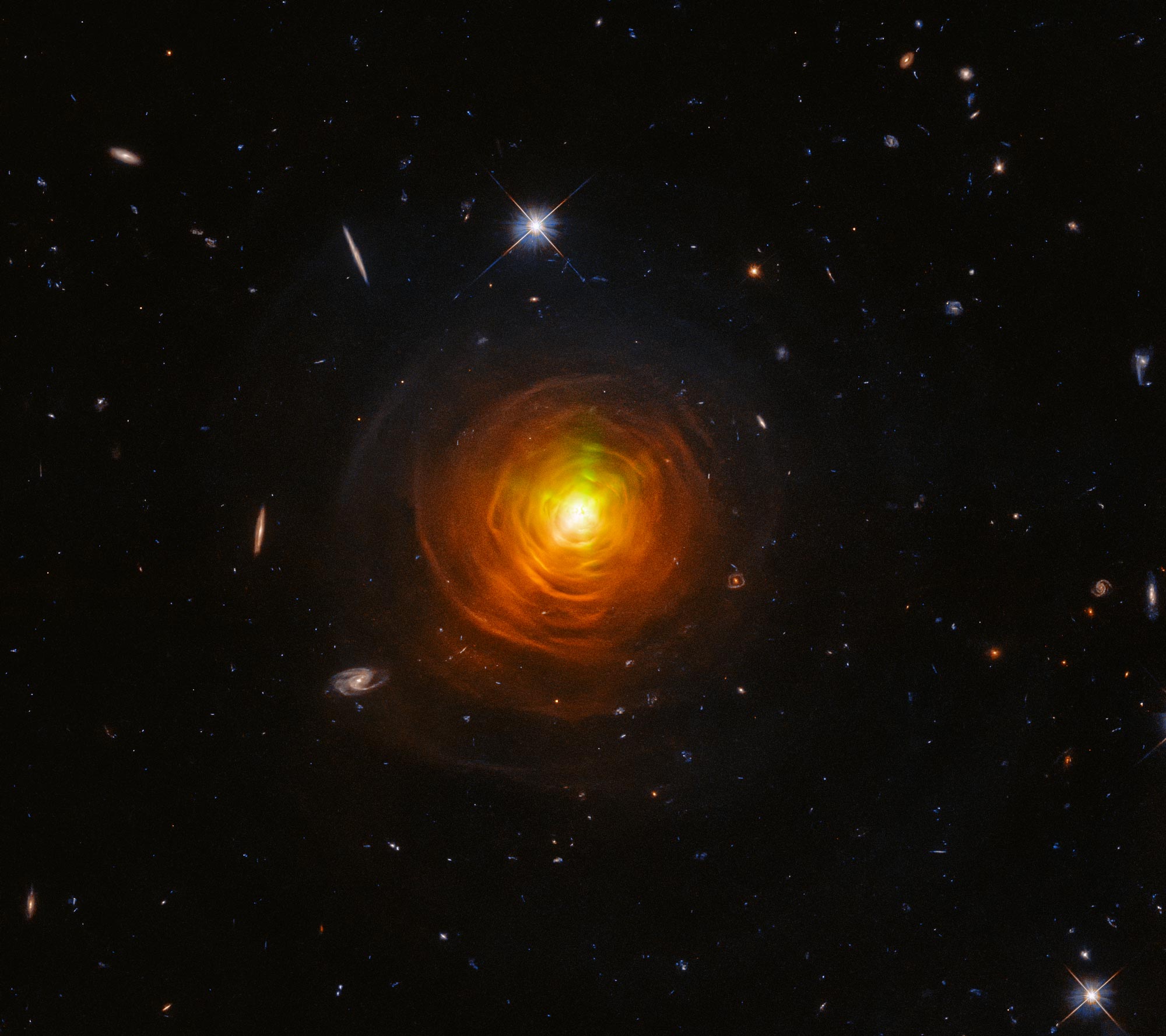
CREDIT: ESA/Hubble, NASA, and Toshiya Ueta (University of Denver), Hyosun Kim (KASI)
Our first image is titled the “Ghost hand of God”. Coming to us from NASA/JPL–Caltech and artist Kevin M. Gill, this weird structure is related to a past supernova that is shocking the gases. While not as shocking as some of our Halloween treats, this image gets 11 out of 10 for actually looking like a disembodied hand.
The hot, x-ray emitting gas of many different structures can trigger pareidolia – that way our brain has of seeing faces and other familiar things, like hands, where there absolutely are not actually hands or faces. Viewed with the Chandra X-ray Observatory, the normally picturesque Perseus Cluster appears to be screaming or moaning. Either way, it seems to be having a really bad day.
Brains are weird. We’re really good at seeing patterns that aren’t actually there. While it was once definitely better to see enemies that weren’t actually there instead of missing the ones that were there, I’m not sure how useful it is to see ghosts in a dark nebula, but here you go — ghosts in a dark nebula. These arm-waving figures appear to be part of SH2-136, a cloud in Cepheus that is gearing up to one day become stars.
And it wouldn’t be Halloween without a few skulls. Or in this case, an asteroid that looks rather like a skull when radar-imaged by the Arecibo Observatory. Hello, 2015 TB145. I really want to know why you aren’t yet named Yorick.
Ghosts, skulls… we just needed a witch to round out our set of decorations, and the Wide-Field Infrared Survey Explorer was here to provide. This is the Witch Head Nebula. I hope Dorothy lets this green-skinned glory continue to cackle for millions of years to come.
Mummies! We almost forgot the mummies. While many people see a face in this Viking 1 image of Mars, I will always see the lid of a mountain-sized sarcophagus. Luckily, there is no actual mummy behind this mask. This is just a trick of the light and the low-resolution camera. Future missions found this feature to be a fairly boring outcrop.
With all the major players accounted for, it’s time for a bit of decoration. How about a spider to creep out your night? I have to admit, this is pretty much the only kind of spider I can deal with. This is the Black Widow Nebula, a star-forming region about 10,000 light-years away.
We have to give a shout-out to Space.com for compiling a list of these images. While our commentary is our own, they saved us a great deal of Googling to find the ghouls from the past. We do have a new image to add to this list, however: a pumpkin. This is actually a dying star, CW Leonis, that was imaged by the Hubble Space Telescope.
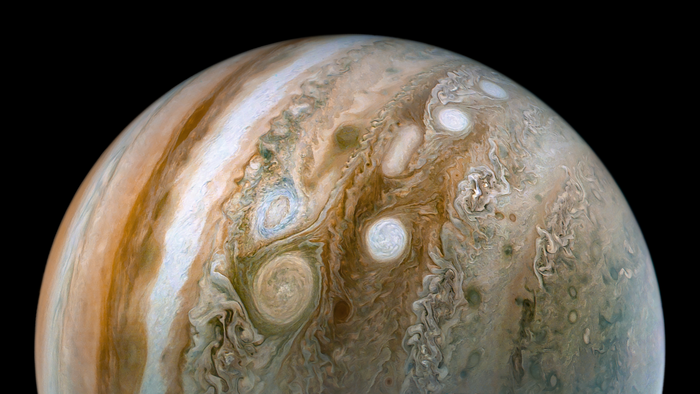
While many people are preparing for the weekend holiday celebrations and observations, the planetary science world is still making amazing discoveries. We turn now to NASA’s Juno spacecraft. One of the primary goals of this mission is to gain a greater understanding of how the storms and cloud layers work beneath the surface. To that end, the spacecraft is equipped with a microwave radiometer.
This instrument is designed to measure microwave emissions from deep inside the planet, using wavelengths ranging from 1.4 centimeters to 50 centimeters. The corresponding atmospheric pressures are about 0.6 bars at the surface, which is less than the surface of Earth, and down past 100 bars or 250 kilometers beneath the cloud tops. Sometimes, you have to step outside visible light to find what you are looking for, and that’s what was done here.
When we look at Jupiter in visible light, we see a pattern of lighter zones and darker belts. You can observe this banding with a relatively small telescope even. Using microwaves, the zones appear bright while the belts stay dark. Brighter objects in these wavelengths are either warmer or lack ammonia, which tends to absorb microwave light. And down to five bars of pressure or five times the pressure at the Earth’s surface, this structure persists.
Then, at 10 bars, the entire pattern reverses. The darker zones are now bright in microwave light while the belts become dark. Something has to have changed, and it’s either the temperature or the abundance of ammonia. This region of transition between 5 and 10 bars is now called the “jovicline” because it’s similar to how seawater in our ocean’s thermocline transitions from relative warmth to colder water.
The results of this data analysis were published in the Journal of Geophysical Research: Planets, and lead author Dr. Leigh Fletcher explains: One of Juno’s primary goals was to peer beneath the cloudy veil of Jupiter’s atmosphere and to probe the deeper, hidden layers. Our study has shown that those colorful bands are just the ‘tip of the iceberg’ and that the mid-latitude bands not only extend deep but seem to change their nature the further down you go. We’ve been calling the transition zone the jovicline, and its discovery has only been made possible by Juno’s microwave instrument.
This jovicline is nearly coincident with an atmospheric layer that is stable and created by condensing water.
Dr. Scott Bolton, Principal Investigator for the Juno mission, said: These amazing results provide our first glimpse of how Jupiter’s famous zones and belts evolve with depth, revealing the power of investigating the giant planet’s atmosphere in three dimensions.
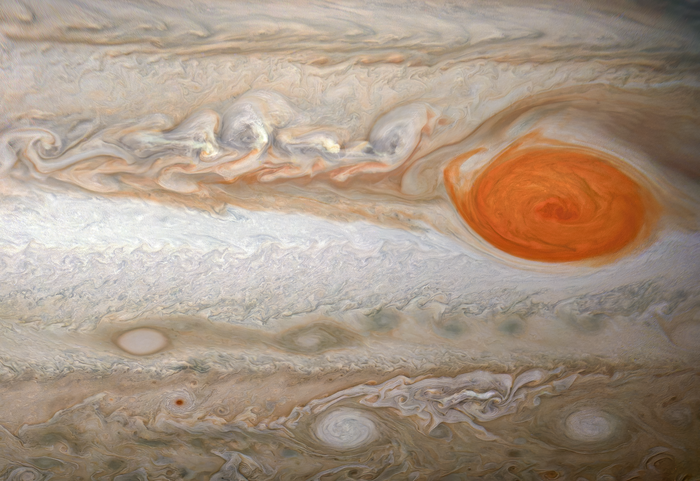
Of course, we would be remiss when talking about Jupiter’s clouds if we didn’t mention the Great Red Spot, and conveniently, research has been published about that famous storm.
Dr. Bolton is the lead author on a new paper published in Science that looks at just how deep this 16,000-kilometer storm that astronomers have been observing for 400 years goes. His team used the same microwave instrument as in our previous story, and they found the storm extends well below the altitude where we expect water and ammonia to condense. These results suggest that there are deeper processes such as precipitation and downdrafts at work and could connect the interior of the gas giant with its deep atmosphere.
A second study in Science led by Marzia Parisi used gravity measurements from Juno and further constrained the depth of the Great Red Spot to no more than 500 kilometers; however, the zonal jets surrounding the story can reach depths of almost 3,000 kilometers. Giant storms, indeed.
Finally, I want to mention a really cool, literally and figuratively, story that crossed my email.
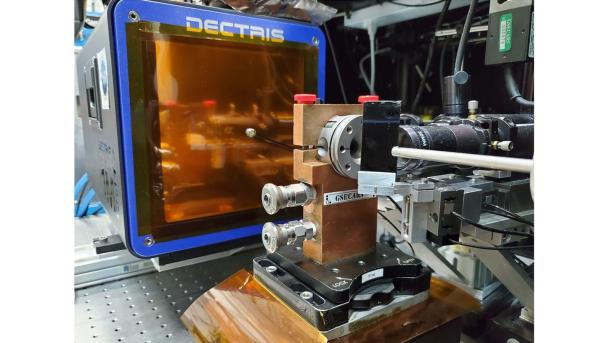
Scientists using the Advanced Photon Source have recreated ‘superionic ice’, the kind formed at the center of our ice giants Uranus and Neptune. We all know that there are three forms of matter: liquid, solid, and gas. It turns out, though, that under different conditions, water can form more than a dozen different structures. Superionic ice forms under extreme pressures and temperatures, such as in the center of ice giants. And while scientists had previously managed to create the substance once before, it was only for an instant. Now, they have managed to create, sustain, and even examine the ice.
The team pressed their sample between two diamonds and then used lasers to heat the sample up. Once that was underway, they used X-ray beams to measure how the X-rays scattered off the interior structure, and that’s how they mapped out just what superionic ice is. At first, the measurements were confusing. As co-author Vitali Prakapenka noted: …when I turned off the laser and the sample returned to room temperature, the ice went back to its original state. That means it was a reversible, structural change, not a chemical reaction.
So just what is this structure? Prakapenka explains: Imagine a cube, a lattice with oxygen atoms at the corners connected by hydrogen. When it transforms into this new superionic phase, the lattice expands, allowing the hydrogen atoms to migrate around while the oxygen atoms remain steady in their positions. It’s kind of like a solid oxygen lattice sitting in an ocean of floating hydrogen atoms.
This work was published in the journal Nature Physics. There is still a lot to learn about this new form of ice, and we will bring it to you here on the Daily Space.
From nearby planets, we now turn to galaxies forming near the beginning of the universe.

The Planck space telescope uncovered more than 2,000 galaxy clusters in the process of forming during the first several billion years of our universe. Barely visible in optical telescopes, these systems glow warmly in longer microwave colors visible to Planck.
In newly published follow-up research, astronomers led by Mari Polletta used the Large Binocular Telescope in Arizona in combination with Hawaii’s Subaru Telescope to study one of these more than 2,000 systems in detail. They also used archival data from Spitzer and Herschel, allowing them to see these systems in the range from microwave to optical and everything in between. Their target was PHz G237.01+42.50 or G237 for short.
The team identified 63 galaxies in this protocluster, and together these 63 systems and the unresolved galaxies around them seemed to be undergoing 1,000 times the star formation of our own Milky Way galaxy. This is a gobsmacking amount of star formation, and if maintained, it would quickly deplete the system of star-forming materials. According to study coauthor Brenda Frye: Each of the 63 galaxies discovered so far in G237 was like a star factory in overdrive. It’s as if the galaxies were working on overtime to assemble stars. The rate of production was unsustainable. At such a pace, the supply chains are expected to break in the near future, and in a way that permanently shuts down the [protocluster].
Or at least it will shut down unless new fuel is somehow delivered to the cluster. And it looks like the Universe just might be doing that.
Galaxy clusters and protoclusters exist at the junction of the walls and threads of the material that make up the large-scale structure of our universe. Often referred to as the cosmic web, this structure looks a bit like a 3-D web or extremely lacy Swiss cheese. Material can flow through these structures, hollowing out the voids and delivering material to the clusters. Frye goes on to explain: The picture we have pieced together now is that of a successful galaxy protocluster, which is working at high efficiency to assemble galaxies and the stars within them and has an energy supply that is more sustainable.
This is just one set of observations of one protocluster and more work is needed to see if these rates of star formation and methods of funneling in material are the norm. Polletta explains: We are in the process of analyzing more observations on this and other Planck protoclusters with the goal of tracing the gas that gives birth to these newly forming stars and feeds the supermassive black holes, to determine its origin and explain the observed extraordinary activity.
The press release associated with this story goes on to say that the originally planned to launch in the 20-aughts Just Waiting Space Telescope is perfectly designed to observe these systems. Unwilling to count their space telescopes before they have first light, the team is proceeding with their mix of Subaru, Green Bank Telescope, and other ground systems, while looking forward to the scope’s launch hopefully at the end of this year or early in the next.
According to Frye: Protoclusters offer an opportunity to investigate key questions in astronomy that only this new observatory can answer, such as what mechanisms drive the prodigious star formation, and when will the hydrogen supply run out, forcing this galaxy [protocluster] to close its doors and turn into a supercluster similar to the one our Milky Way is in.
I look forward to seeing future papers in this series and understanding more about how our universe has grown into its current state.
Review

In this last segment of the show, I’m going to review the new Sci-Fi show from Simon Kinberg and David Weil, Invasion. I also need to correct some nomenclature confusion from past episodes.
This show appears on Apple TV+ which is a service you can use through your phone, tablet, or computer, and that is natively available on Apple TV hardware. Apple+ is not a thing, Apple TV+ is the service, and Apple TV is the hardware. I’m going to try really hard not to misspeak again, but this feels like the entertainment version of the meteoroid-meteorite-meteor nomenclature confusion.
Back to the review.
Invasion is a show that seems to be giving away spoilers with its very name. I’ve watched the first four episodes, and this slow burn of a show starts off with the world suffering pockets of confusing destruction. The show’s summary lets the viewer know that this is gonna be aliens, just hold on. I actually think it was a mistake to give away so much with the title and summary. Because I know it’s going to be aliens, I find myself wanting to see Independence Day or V–style spaceships hovering over cities. I want to see the invasion forces of Falling Skies doing what they will to humanity. I want to see something, and as of 4 episodes in, we’ve only gotten hints – sounds from space, a fragment of a sighting in a melee – and these hints do not sate my need for aliens.
This is not a show about aliens, however, at least not yet. Instead, it is a show about people responding to their world falling apart for unknown reasons as satellites fall from the sky, mysterious events occur, and as people have to deal with all this chaos while dealing with the normal chaos of relationships, careers, and family.
Just don’t fall in love with any of the characters. This is a show not afraid to kill the folks you think are in it for the season. You are warned.
Is this a good show? I think so? Invasion does not offer instant gratification or cliffhanger endings. Just like life in the first weeks of the pandemic, it shows people just trying to survive while it’s unclear exactly what is wrong with the world, other than knowing that something really, really bad is happening, and it is happening everywhere.
This is not escapist fiction. This is a story written for this moment. I don’t really like this moment in history, and I kind of want it to hurry up and conclude. And I want this show to hurry up and show me those aliens. Get to the action or something. Am I going to keep watching? Yes. Is it worth watching? Not if you’re into instant gratification. I feel like this is the kind of show that might benefit from a binge-watch.
New episodes drop each Friday. With ten episodes planned and a second season already greenlit, Apple TV+ is showing that they believe this show will find an audience. And I guess it found me? Unless you are someone who is determined to watch every sci-fi show as they come out, maybe hold off watching until you know action is coming. Give us a follow on Twitter, where we are @cosmoquestx, and we’ll let you know when the aliens arrive and if it’s time to tune in.
This has been the Daily Space.
You can find more information on all our stories, including images, at DailySpace.org. As always, we’re here thanks to the donations of people like you. If you like our content, please consider joining our Patreon at Patreon.com/CosmoQuestX.
Credits
Written by Pamela Gay and Beth Johnson
Hosted by Pamela Gay and Beth Johnson
Audio and Video Editing by Ally Pelphrey
Content Editing by Beth Johnson
Intro and Outro music by Kevin MacLeod, https://incompetech.com/music/


 We record most shows live, on Twitch. Follow us today to get alerts when we go live.
We record most shows live, on Twitch. Follow us today to get alerts when we go live.